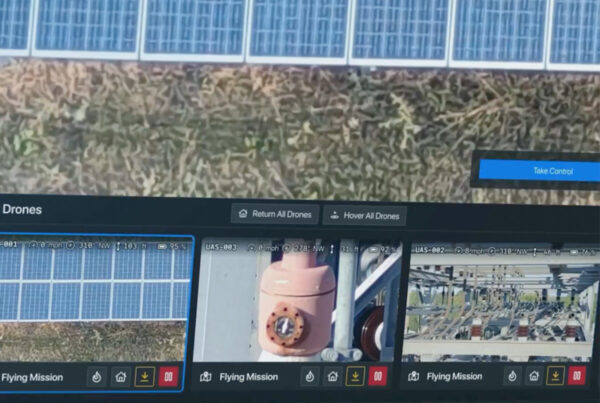
Over the next decade, the electric utility ecosystem is perfectly poised to grow its potential along with its complexity. From rising interest rates to regulatory constraints and continuously evolving priorities, utilities face difficult budgetary decisions in tandem with mounting pressure to increase adoption of renewable generation. How can more be done, with less?
To ensure that your critical asset infrastructure is sustainable and adaptable on both a physical and financial level, you must continuously leverage your organization’s expertise and vision. Ultimately, your organization needs a plan that can carry you smoothly from 2023 on into 2035—the key net-zero milestone. But making wise and timely decisions can be deceptively straightforward.
In the spirit of making solid, well-informed plans, consider the following key elements of successful power grid planning:
1. Managing the modernization of long-term strategic assets
To improve performance and reduce downtime, utilities need to upgrade and optimize their aging grid infrastructure. This means implementing smart grid technology that helps utilities better manage energy supply and demand and integrating renewable resources to reduce their reliance on fossil fuels and decrease carbon emissions.
But budgets rarely allow for mass replacements of old equipment with new, more efficient devices that incorporate modern technologies. So, choices must be made and upgrades prioritized.
The most profitable decisions you’re likely to make in the name of sustainable asset lifecycle management can be readily facilitated and accelerated using Asset Investment Planning (AIP) technology, which makes it possible to gain insight into your grid’s future needs via:
- Predictive analytics: AIP offers predictive analytics for CAPEX/OPEX optimization amid challenges that involve resource limitations and aging infrastructures. By harnessing a range of financial modeling techniques to uncover patterns in your data, AIP software can identify upcoming risks and opportunities alike.
- ‘What-if scenario’ modeling: More senior executives are starting to turn towards AIP software to gain a better understanding of the risks they face, so they can competently prepare for the future. By undertaking a ‘what-if scenario’ analysis, they’re able to factor elements, such as government policy changes or shadow pricing, into their calculations.
- Machine learning: Power utilities can use data analytics and machine learning algorithms to analyze grid data and optimize energy supply and demand. This includes predicting demand patterns, identifying energy losses, and optimizing grid operations to reduce costs and improve efficiency.
2. Integrating Distributed Energy Resources (DERs)
Energy systems that will thrive in the future will need to prioritize distributed generation, so preparing for its rise is everything.
Common examples of DERs include rooftop solar PV units, natural gas turbines, microturbines, wind turbines, biomass generators, fuel cells, tri-generation units, battery storage and electric vehicles (EV).
The EV industry is currently valued at $287.36 billion. That’s an increase of about $40 billion since 2020, and this figure is set to surpass $1.3 trillion by 2028. The industry is growing exponentially, and consumer interest is nowhere near its peak. Utilities need to be prepared.
DERs represent unique challenges for electric utilities. Their rise poses a significant challenge, especially around unplanned-for infrastructure investments as consumers shift towards becoming prosumers.
But they also can be a key element on a path towards resiliency. Utilities that adopt energy storage solutions now will be able to better manage peak demand periods and provide backup power during outages. These solutions also can support the integration of renewable energy sources by storing excess energy for use when demand is high.
The use of AIP technologies can help to weigh the impacts and trade-offs associated with the challenges of DERs. This will help utility leaders clarify current opportunities and achieve their goals.
3. Weighing internal demand
By taking a well-informed, value-based decision-making approach, your organization can ensure that it is making the right grid modernization investments at the right time.
Weighing demand internally is a good place to start. Calculating the value of your utility electrifying its car fleet is one example. Be sure to factor in: model implementation costs, maintenance costs, and TCO (total cost of ownership) to develop a clear picture of the point at which electric vehicles become the better choice for you over cars powered by gasoline.
Imagine how much simpler it would be if you could digitize the internal expertise of your infrastructure managers, including the modeling of an asset’s evolution and decision-making processes over time.
4. Weighing external demand
If you’re able to foresee and calculate excess charges on your network, you’re much more likely to be able to anticipate cases of accelerated degradation of your assets or infrastructure in certain areas or ‘pockets.’ By extension, you’ll be better equipped to predict and prepare for the impact this may have on your network.
Hydro-Quebec TransEnergie, operator of North America’s most extensive electrical power transmission system with assets valued at more than $20 billion, implemented an AIP solution to better anticipate issues that might arise due to an aging network. By using the software, they determined the optimal intervention sequencing strategies and the best policies for prioritizing maintenance and investments.
Looking beyond 2023
In a world driven by grid modernization and net-zero targets, you must plan for your network’s future needs today. Overall, modernizing power grids requires a comprehensive approach that incorporates new technologies, renewable energy sources, and advanced analytics to optimize grid performance and reliability while reducing costs and carbon emissions.
Utilities always have had to work around factors that are beyond their control. By using data analysis and optimized capital planning software, though, you now can foresee any possible risk, and have strategies at the ready to identify, analyze and mitigate that risk. This will ensure that your utility provides the most reliable, affordable, accessible, and safe energy for decades to come.














